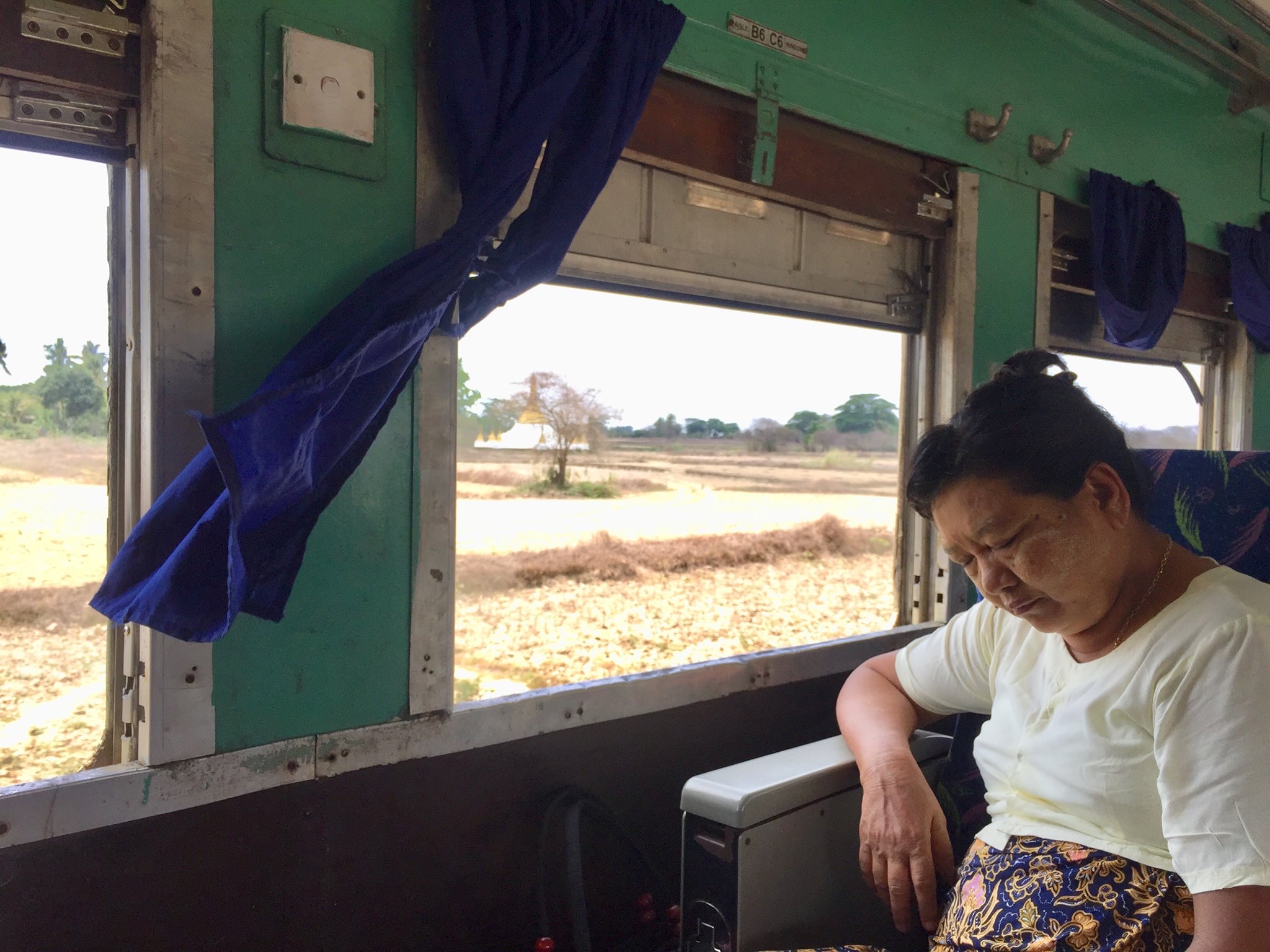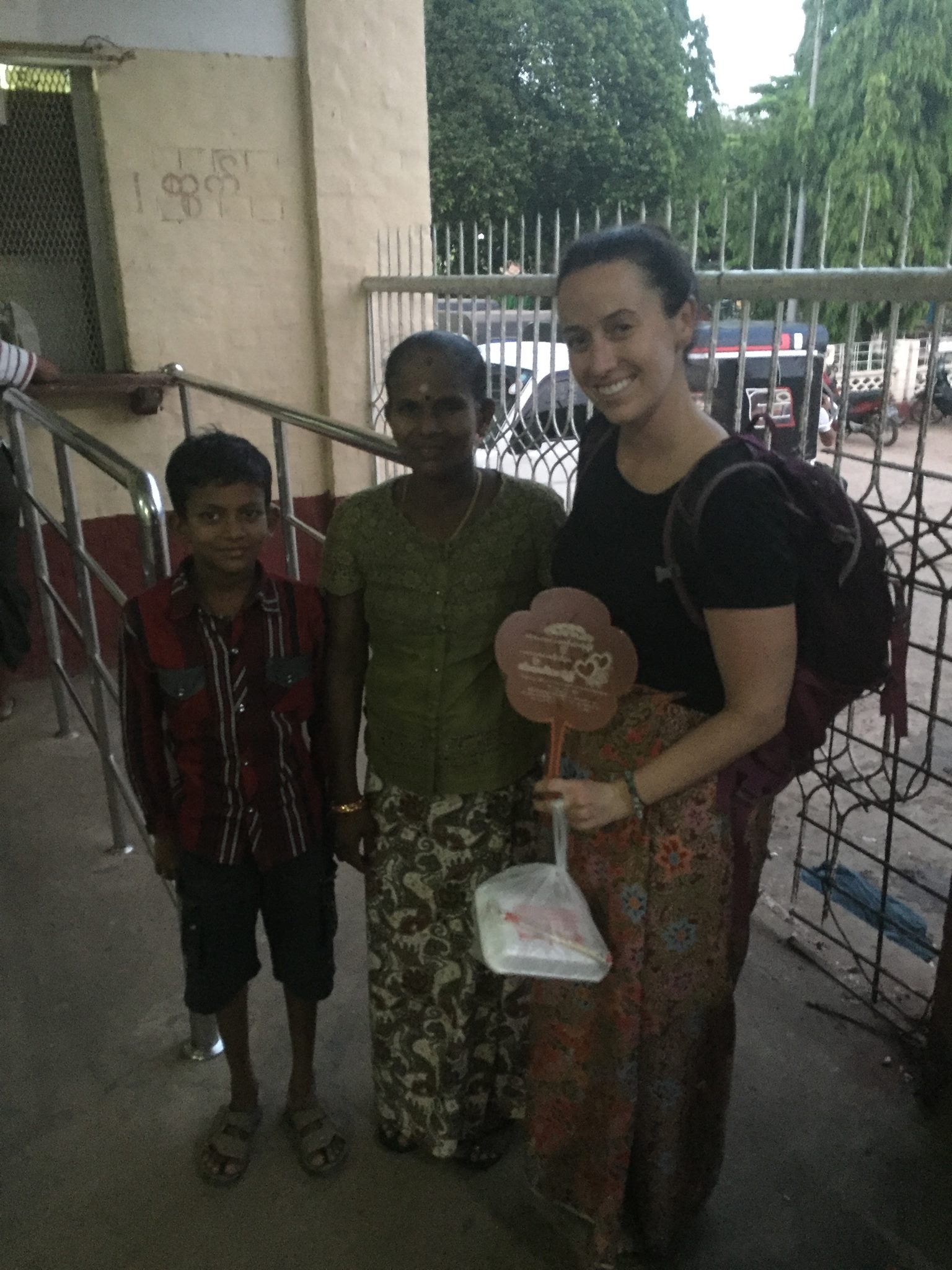Day Trip to Bago
If you find yourself with extra time visiting Myanmar’s biggest city, Yangon, the nearby city of Bago makes a great and easy day trip! Bago (formerly Pegu) is Myanmar’s 4th largest city, but doesn’t have the same big city feel as Yangon. You can reach Bago either by bus or by train within 2-3 hours. Bus is apparently faster, but we had no luck getting a bus ticket, so we opted for the train instead.
Multiple signs can be found in the train station reminding locals to be welcome to and help tourists!
This is so kind! Why don’t we have these in the US and other Western countries?
Passing pagodas while on the train.
Cici boarding the train.
We passed multiple Christian cemeteries on the way to Bago.
It takes 3 hours to reach Bago by train from Yangon’s main train station near the Shangri-La. Luckily, it is much quicker on the return home! The train moves very slow, and there’s not much between Yangon and Bago. Either way, looking out the window provides expansive views of the Burmese countryside and passes many pagodas on the way.
Burmese woman on the train. Photo by Cristina Girod (Cici).
Bago has several main tourist sites, so the city can be seen (via those sites) relatively quickly. Unless you manage to organize a tour in advance, you’ll need to rent motorbikes or pay a (songthaew) to drive you around for the day. We met a monk on the train who helped us with a driver and offered to tour us for the day. How lucky!
The first stop we went to was the Kanbawzathadi palace. At the entrance to the palace, we paid the city entrance fee that gives you access to most of the tourist sites, so we were all set for most of the day. The palace was looted and destroyed in 1599, but since, much has been rebuilt and renovated to serve as a sort of museum to the original. In one section, you’ll see teak pillars that were originally used to hold up the palace when it was first built. There are also small relics in this room representing items found in the excavations.
Walking around the palace.
Gardens outside of the Palace.
One of the golden entrances that the king would stand in front of.
The second stop was at the Schwemawdaw pagoda, otherwise known as the tallest pagoda in the country at 114 meters (some people claim the tallest is the Schwedagon in Yangon at 98 meters). This was our first real visit to a Pagoda in Myanmar, and our first impression was WOW. These structures are so beautiful, and the people around them keep the area around them so clean and charming. As we were arriving, the first thing the monk told us was to leave our shoes in the truck. No walking around the pagoda, or really any of the important, religious sites in Myanmar with shoes. This site, like many of the big pagoda sites in Myanmar, consisted of one central pagoda with many small structures surrounding it. Many of the small structures contained one or more Buddhas and locals praying. Also surrounding the bottom of the pagoda are 8 small Buddhas that correspond to the day of the week you are born on, Wednesday having an AM and a PM Buddha. With the Buddha is generally a cup and some water. The practice is to pour your age in glasses on the Buddha for good luck. Without the monk though, we would have never figured out which Buddha was ours!
Road to the Schwemawdaw Pagoda.
Our third stop was at the huge, Swethalyaung reclining Buddha. This is a 55m long and 16m Buddha originally built in 994 (Wikipedia), but it has been abandoned and renovated several times since then. The details are very inctricate, and the glass tiles make it unlike much of the other Buddhas I saw in SE Asia.
Our last and final stop that we fit in the day was at the Mahar Zayde Pagoda - my favorite one. This pagoda was different than many of the other ones we had seen near and far. Instead of being a singular, smooth golden unit, it had a golden top with many layers of white, terracing steps leading up to it. Before we could even ask if we could climb up, the monk so bluntly let us know that we are lower than men, and men are lower than monks, so women aren’t allowed to climb up the steps. LOL. Things you can say in Myanmar, but never could say in the US.
At the end of the day, we were pretty hungry, so the monk and the driver dropped us off at their recommended restaurant while they headed to a market. We had the BEST noodles of our trip here! So good, that we ordered a second portion for the ride home. They were called Malaysian noodles, and tasted sort of like Thai Pad See Ew but thinner. So when in Bago, stop for lunch or dinner at Shwe Le Restaurant - it’s near the train station and you won’t regret it!
Restaurant Info
Malaysian Noodles!
So happy to be having the noodles on the ride home :)
Once we arrived at the train station, we found out the train back to Yangon was delayed - apparently a regular occurrence. In the time we had to wait, we had to figure out how to get tickets. The monk we were with wanted to get us all tickets in “first class for a low price because apparently monks in Myanmar are treated better than people, so they can receive seating and tickets at lesser costs. Didn’t seem the most fair to get us tickets in first class, but then again, maybe that is just a way for the Burmese to “Welcome Tourists.” Well, it ended up with us sitting in the train station office for a little. When I walked in, I thought we were in trouble as the men running the place asked us to sit down! Everyone ended up being so kind. Once ticketed, we walked back outside to wait on the benches. It was maybe 90+ degrees Fahrenheit, and being in a poorly ventilated outdoor area, and in thick longyis, I was covered in sweat. A local young boy, maybe 10, approached me with a fan. Without being able to communicate in the same language, he made it clear he wanted to gift me his fan… It was one of the nicest things that happened to me while traveling! A complete stranger, clearly without much money, gifting an obviously wealthier traveler with something that he uses every day. I was so touched. After thanking him and trying to communicate with him, I thought about what I could offer him. I didn't have any trinkets to offer, but I did have coins. I had the monk translate and tell the boy I wanted to give him a gift from my travels. I gave him a few unique coins from some of the countries I went to. His face lit up and he smiled so big! We even got a picture with him. Some others sitting around us gathered and wanted to see the coins too, so I ended up giving a few more out - most people there had never seen a quarter before! If you head to this part of the world and are somewhat fortunate, I would suggest bringing some small trinkets from here or from your travels to offer to the children - it’s a small way to interact with them and thank them for the hospitality.
Cici sitting with some of the employees at the train station.
My little friend and his mom. Many of the Burmese we met didn’t smile for pictures.






























